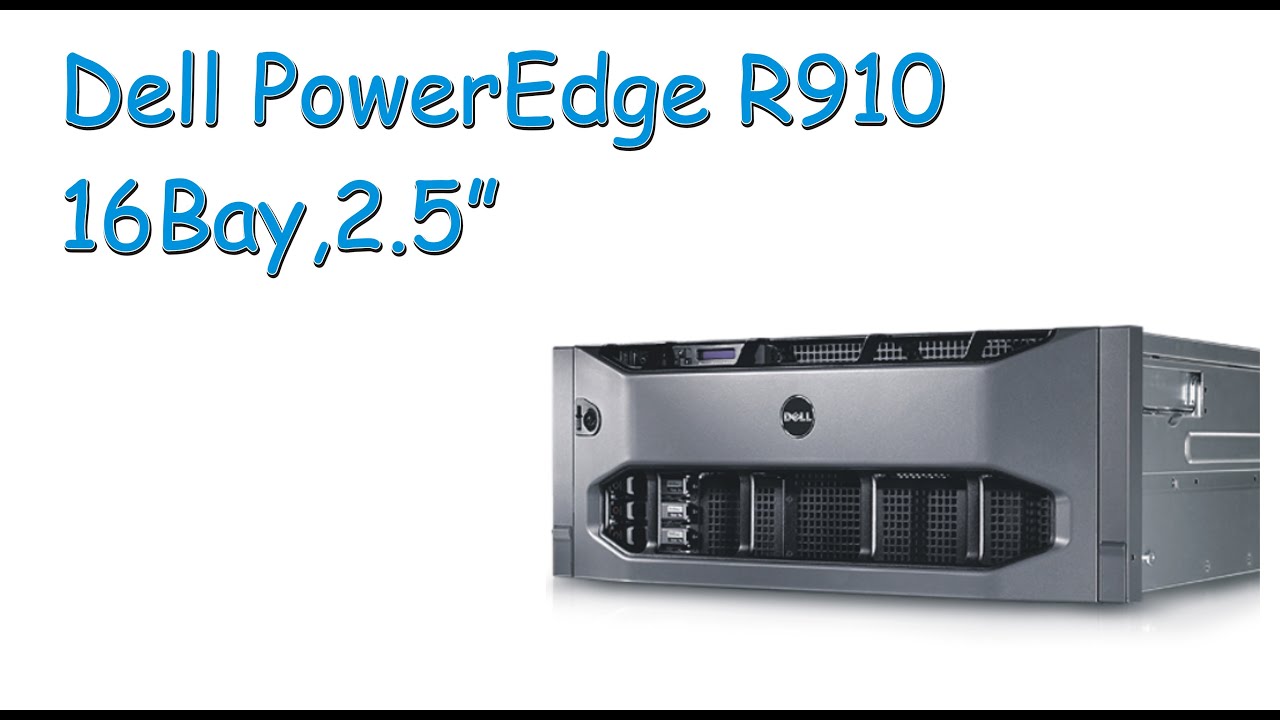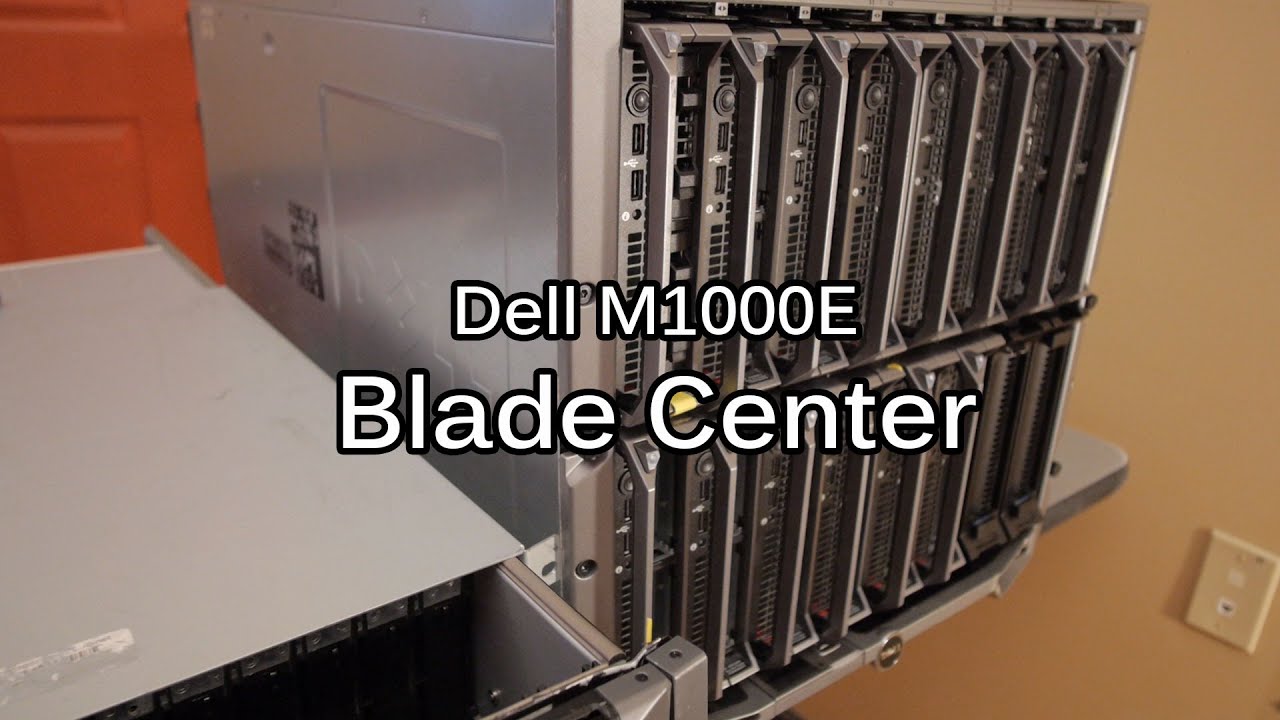Technology
Pyramid Flow open source AI video generator launches

Join our daily and weekly newsletters for the latest updates and exclusive content on industry-leading AI coverage. Learn More
The number of AI video generation models continues to grow with a new one, Pyramid Flow, launching this week and offering high quality video clips up to 10 seconds in length — quickly, and all open source.
Developed by a collaboration of researchers from Peking University, Beijing University of Posts and Telecommunications, and Kuaishou Technology — the latter the creator of the well-reviewed proprietary Kling AI video generator — Pyramid Flow leverages a new technique wherein a single AI model generates video in stages, most of them low resolution, saving only a full-res version for the end of its generation process.
It’s available as raw code for download on Hugging Face and Github, and can be run in an inference shell here but requires the user to download and run the model code on their own machine.
NEW: Open Source Text/ Image to video model is out – MIT licensed – Rivals Gen-3, Pika & Kling 🔥
> Pyramid Flow: Training-efficient Autoregressive Video Generation method
> Utilizes Flow Matching
> Trains on open-source datasets
> Generates high-quality 10-second videos
>… pic.twitter.com/ZU0X6YMxWr— Vaibhav (VB) Srivastav (@reach_vb) October 10, 2024
At inference, the model can generate a 5-second, 384p video in just 56 seconds—on par with or faster than many full-sequence diffusion counterparts — though Runway’s Gen 3-Alpha Turbo still takes cake in terms of speed of AI video generation, coming in at under one minute and often times 10-20 seconds in our tests.
We haven’t had a chance to test Pyramid Flow yet, but the videos posted by the model creators appear to be incredibly lifelike, high enough resolution, and compelling — analogous to those of proprietary offerings. You can see various examples here on its Github project page.
Indeed, Pyramid Flow is available designed now to download and use — even for commercial/enterprise purposes — and is designed to compete directly with paid proprietary offerings such as Runway’s Gen-3 Alpha, Luma’s Dream Machine, Kling, and Haulio, which can cost hundreds of even thousands of dollars a year for users on unlimited generation subscriptions.
As the race between various AI video providers to gain users continues, Pyramid Flow aims to bring more efficiency and flexibility to developers, artists, and creators seeking advanced video generation capabilities.
A new technique for high-quality AI videos: ‘pyramidal flow matching’
AI video generation is a computationally intensive task that typically involves modeling large spatiotemporal spaces. Traditional methods often require separate models for different stages of the process, which limits flexibility and increases the complexity of training.
Pyramid Flow is built on the concept of pyramidal flow matching, a method that drastically cuts down the computational cost of video generation while maintaining high visual quality, completing the video generation process as a series of “pyramid” stages, with only the final stage operating at full resolution.
It’s described in a pre-reviewed paper, “Pyramidal Flow Matching for Efficient Video Generative Modeling,” submitted to open access science journal arXiv on October 8, 2024.
The authors include Yang Jin, Zhicheng Sun, Ningyuan Li, Kun Xu, Hao Jiang, Nan Zhuang, Quzhe Huang, Yang Song, Yadong Mu, and Zhouchen Lin. Most of these researchers are affiliated with Peking University, while others are from Kuaishou Technology.
As they write, the ability to compress and optimize video generation at different stages leads to faster convergence during training, allowing Pyramid Flow to generate more samples per training batch.
For example, the proposed pyramidal flow reduces the token count by a factor of four compared to traditional diffusion models, which results in more efficient training.
The model can produce 5- to 10-second videos at 768p resolution and 24 frames per second, all while being trained on open-source datasets. Specifically, the paper states that Pyramid Flow was trained on trained on:
- LAION-5B, a large dataset for multimodal AI research.
- CC-12M, a dataset of web-crawled image-text pairs.
- SA-1B, which features high-quality, non-blurred images.
- WebVid-10M and OpenVid-1M, which are video datasets widely used for text-to-video generation.
In total, the authors curated approximately 10 million single-shot videos.
However, many of these “public” or “open source” datasets have in recent years come under fire from critics for including copyrighted material without permission or informed consent of the copyright holders, and LAION-5B in particular accused of hosting child sexual abuse material.
Separately, Runway is among the companies being sued by artists in a class action lawsuit for training on materials without permission, compensation, or consent — allegedly in violation of U.S. copyright. The case remains being argued in court, for now.
Permissively licensed, open source for commercial usage
Pyramid Flow is released under the MIT License, allowing for a wide range of uses, including commercial applications, modifications, and redistribution, provided the copyright notice is preserved.
This makes Pyramid Flow an attractive option for developers and companies looking to integrate the model into proprietary systems, and could challenge Luma AI and Runway as both look to offer paid application programming interfaces for developers seeking to integrate their proprietary AI video generation technology into customer or employee-facing apps.
Yet those proprietary models already exist as inferences suitable for developers, while Pyramid Flow has a demo inference on Hugging Face, it is not suitable for building full applications atop it and users would need to host their own version of an inference, which could also be costly, despite the model itself being “free.”
In addition, Pyramid Flow may prove to be enticing to film studios looking to leverage AI to gain efficiencies, cut costs, and explore new creative tools. One major film studio, Lionsgate — owner of the John Wick and Twilight films franchises, among many other tiles — recently inked a deal for an unspecified sum with Runway to train a custom AI video generation model. Furthermore, Titanic and Terminator director James Cameron joined the board of AI video and image model provider Stability (the latter also subject to the same class-action lawsuit from artists as Runway).
Using Pyramid Flow, Lionsgate or any other film studio could fine-tune the open source version without paying a third party company. However, they would still need to have on hand or contract out the developer talent and computing resources necessary to do so, which may make partnering with established AI providers such as Runway more appealing, since that company and others like it already have the AI engineering talent at their disposal in house.
The research team behind Pyramidal Flow Matching has also made a commitment to openness and accessibility. All code and model weights will be made freely available to the public through their official project page, ensuring that researchers and developers around the world can utilize and build upon this work.
Despite its strengths, Pyramid Flow does have some limitations. For now, it lacks some of the advanced fine-tuning capabilities found in models like Runway Gen-3 Alpha, which offers precise control over cinematic elements like camera angles, keyframes, and human gestures. Similarly, Luma’s Dream Machine provides advanced camera control options that Pyramid Flow is still catching up to.
Moreover, the relatively recent launch of Pyramid Flow means its ecosystem—while robust—isn’t as mature as those of its competitors.
Looking ahead: AI video race shows no signs of slowing
As the AI video generation market continues to evolve, Pyramid Flow’s launch signals a shift toward more accessible, open-source solutions that can compete with proprietary offerings such as Runway and Luma.
For now, it offers a solid alternative for those looking to avoid the cost and limitations of closed models, while providing impressive video quality on par with its more commercial counterparts.
In the coming months, developers and creators will likely keep a close eye on Pyramid Flow’s growth. With the potential for further improvements and optimizations, it could very well become a go-to tool in the arsenal of video content creators everywhere. All the companies and researchers are currently battling both for technological supremacy and users.
Meanwhile, OpenAI’s Sora, first shown off in February 2024, remains nowhere to be seen — outside of its collaborations with a handful of small early alpha users.
Source link
Technology
The most interesting unicorns to come out of Japan

Japan’s startup sector, despite being one of the biggest in the world, has lagged behind other regions like the U.S., China, and the U.K., in terms of the number of unicorns and the scale of venture capital investment. For years, an aging population, overall economic deflation, and salarymen’s inclination to work at traditional, big corporations meant the startup life wasn’t an attractive one for many.
For context: Per a recent IMF report that cites CB Insights data, as of October 2023, the U.S. had about 661 unicorns, China counted 172, and the U.K. had 52. Japan had a mere seven unicorns. (PitchBook pegs the number of Japanese startups at nine, so it’s possible we have more unicorns in the market than these datasets suggest.)
But things are looking up — somewhat. Young graduates are increasingly breaking from the mold, opting to strike out on their own instead of working within existing corporate systems. And the Japanese government is trying to attract interest in the country’s startups once again.
The government’s “Startup Development Five-Year Plan,” for one, was launched in 2022 and aims to help create 100,000 startups and foster 100 unicorns by 2027 by promoting incubators, strengthening funding with a venture fund, diversifying exit avenues, and more. The Tokyo Metropolitan Government earlier this year launched Tokyo Innovation Base, a startup hub that organizes networking events and pitch competitions and offers workspaces for founders. There’s also a Startup Visa that makes it easier for venture capital firms, startups, and accelerators to set up in Japan, and there’s a special tax system for angel investors. It helps that the country is home to about 130 accelerators, which isn’t too bad given the size of the market.
Despite these advantages, most of the venture capital invested in Japan comes from outside it. The IMF report mentioned found that between 2010 and 2023, investors from the U.S. accounted for 50% of investment in Japanese startups, investors from the U.K. made up about 10%, and Japanese investors lagged at only 5%.
For example, Bessemer Venture Partners recently invested for the first time in a Japanese startup, a food-delivery company called Dinii. “Having been fortunate to be a key investor in Toast in the U.S., supporting it to become a $13 billion company, we see a similar element of success in Dinii,” Bryan Wu of Bessemer Venture Partners said at the time.
Japanese startups usually decide to go public sooner in their development than startups in other countries. For example, they may go public after just a couple of funding rounds, thanks to the Tokyo Stock Exchange’s lenient IPO rules. So it’s likely we might see the unicorns listed below doing an IPO sooner than later.
Here are a few unicorns from Japan that are worth keeping an eye on.
Spiber
Total funding raised: $653 million
Last funding round: $65 million (10 billion JPY) in April 2024
Key investors: Baillie Gifford, Fidelity Investments, Goldwin, Kansai Paint, Iowa Economic Development Authority, Shinsei Bank, and the Carlyle Group.
Spiber grabbed investor, and customers’, attention quite quickly with its environment-friendly biomaterials that have a huge array of applications. Companies across the fashion, cosmetics, and automotive industries use Spiber’s materials instead of animal, plant, or synthetic materials, and its customers include Pangaia, the North Face, Goldwin, Woolrich, Shiseido Japan, and Toyota.
In April this year, it raised about $65 million (10 billion JPY) to scale up production of its “Brewed Protein” materials, which have applications in textile production. It has 300 employees, and the company last year set up an office in Paris to promote its business in Europe.
SmartNews
Total funding raised: $479 million
Last funding round: $69.3 million venture debt round in January 2024
Key investors: Atomico, Asian Capital Alliance, Development Bank of Japan, Globis Capital Partners, Japan Post Capital, JIC Venture Growth Investments, SMBC Venture Capital, Social Venture Partners, Princeville Capital, and Woodline Partners.
Founded in 2012, news aggregator SmartNews sought to take a new approach as a news provider: It partnered with publications to offer a personalized and streamlined news feed to users. It launched in the U.S. in 2014 and quickly saw its fortunes burgeon. It became the first news startup to achieve a billion-dollar valuation since 2015, and then in 2021, its valuation shot up to $2 billion.
The startup, however, has found it difficult to retain users as social media platforms like X, Threads, Mastodon, and Bluesky try to position themselves as places to read breaking news. The startup counted 1.7 million daily active users between Q1 2023 and Q3 2023, down nearly 30% from a year earlier, according to SensorTower.
SmartHR
Total funding raised: $362 million
Last funding round: $140 million Series E in June 2024
Key investors: Beenext, Coral Capital, KKR, Light Street Capital, Sequoia Capital Global Equities, Teachers’ Ventures Growth (Arm of Ontario Teachers’ Pension Plan), World Innovation Lab, and Whole Rock.
Co-founded in 2015 by Kensuke Naito and Shoji Miyata, SmartHR has been seeing strong demand for its SaaS platform, which helps enterprises manage and streamline human resources and operations, in the past couple of years. Its ARR hit $100 million in February 2024, up from $80 million in FY 2023. SmartHR joined the unicorn club after raising about $115 million Series D at a valuation of $1.6 billion in May 2021.
Sakana AI
Total funding raised: $344 million
Last funding round: $214 million funding in Series A in September
Key investors: Dai-ichi Life, Fujitsu, Global Brain, Itochu, JAFCO, Khosla Ventures, Lux Capital, Mizuho, Mitsubishi UFJ Financial Group (MUFG), New Enterprise Associates, Nomura, Nvidia, SBI, Sumitomo Mitsui Banking Corporation (SMBC), Sony, Translink Capital, and 500 Global.
Founded in 2023 by former Google AI engineers, Sakana AI focuses on training low-cost generative AI models using small datasets. The company’s co-founder and CEO, David Ha, previously worked as the head of research at Stability AI and was a researcher at Google.
The startup collaborates with Nvidia, the University of Oxford, and the University of British Columbia on research, data centers, and AI infrastructure. Sakana has 20 staff and has garnered good amounts of attention in Japan, which is keen to catch up to the U.S. and U.K. in the AI race — it even managed to secure processing time on one of Japan’s supercomputers. The startup raised a massive Series A round (about $214 million) in September at a valuation of $1.5 billion from major Japanese banks and tech companies.
Preferred Networks
Total funding raised: $152.19 million
Last funding round: $8.1 million Series C in 2018
Key investors: Chugai Pharma, FANUC, Hakuhodo DY, Hitachi, JXTG, Mitsui, Mizuho Bank, Tokyo Electron, and Toyota.
Founded in 2014, Preferred Networks designs semiconductors for use with AI, develops software for them, and builds generative AI foundation models. The company has deep learning and machine learning models for applications in robotics, manufacturing systems, drug discovery, 3D scanning, autonomous driving, e-commerce, and food inspection.
The startup in September landed a significant 69 billion yen (about $463 million) investment from Japanese financial services firm SBI Holdings to develop semiconductors specifically for AI applications. And it has contracted Samsung to build 2-nanometer chips for AI.
OPN
Total funding raised: $222 million
Last funding round: $120 million Series C+ funding in May 2022
Key investors: JIC Venture Growth Investments, Mars Growth Capital, MUFG, and Sumitomo Mitsui Banking Corp.
OPN, a fintech startup formerly known as Synqa, first started its business in Bangkok, Thailand, in 2014. OPN offers a range of services, including mobile payments, online payments, and virtual cards, to over 7,000 merchants. Its customers include Toyota as well as Thai firms such as duty-free store operator King Power, telco company True, and online insurance provider Roo Jai.
The company now operates in Japan, Singapore, Indonesia, Malaysia, the Philippines, and Vietnam. In 2022, the company acquired U.S.-based MerchantE for about $400 million to establish a presence in the U.S. Most recently, the company announced a strategic partnership with BigPay, a Malaysian e-wallet platform that was recently launched in Thailand.
Servers computers
SERVER: Dell PowerEdge R910 ,16Bay,2.5" small and corporate business machine

https://qaisar-itr.com +971 52 8708704
Dell PowerEdge R910 is an Intel based 4-Socket, 4U Rack mount Server machine with 4-Way scalability,
1- Recommended for small Business and corporate business for mission critical applications in Corporate Data Centers (CDC) and where workloads needing highest performance and reliability.
2- It support max. 2TB memory DDR3 that can be fix in 8 Riser memory modules consisting of 08 slots each
3- Front Accessible 16 Bays 2.5”
4- Hot-Swap Power Supply 4 X 1100 Watt
5- Gigabit Ethernet 04 Ports
6- Max. weight 47.6 KG with full configuration.
#Dell-R910-Server #Used Servers parts #BuyDellServer in UAE #IT Hardware #Network-Infrastructure .
source
Servers computers
Dell M1000e Blade Center – 16 servers, 1tb Ram and 10gb ethernet in a tiny cube!

Qain and Wendell take a look at the Dell M1000e bladecenter: https://teksyndicate.com/videos/big-compute-dell-m1000e-bladecenter
Music: http://bit.ly/Trk2ik, Merch: http://epicpants.com
Game Deals: https://teksyndicate.com/gamedeals
Though this equipment is about 3 years old, this setup has 1.5 terabytes of ram and 12 hyper-threaded cores per blade in 16 blades. Each blade in a bladecenter is a fully functional Xeon server, and the bladecenter houses up to 16 of these blades.
Full article over at https://www.teksyndicate.com
Join the community: https://teksyndicate.com/user/register
You can create a new account or join using your google, steam, facebook, openID, twitter, linkedin, yahoo, etc.
If you have questions, comments, suggestions, or if would like to use a portion of this video please email us: inbox@teksyndicate.com
For marketing (sponsorship opportunities) inquiries email info@teksyndicate.com
Social:
Twitter: https://twitter.com/teksyndicate
Logan’s Twitter: https://twitter.com/Logan_RTW
Facebook: https://www.facebook.com/teksyndicate .
source
Servers computers
What are Mainframes?

Mainframe computers, also known as “big iron,” power things from credit card processing to airline ticketing. How do they work, and what makes them different from other large-scale devices like supercomputers?
TunnelBear message: TunnelBear is the easy-to-use VPN app for mobile and desktop. Visit http://tunnelbear.com/linus to try it free and save 10% when you sign up for unlimited TunnelBear data.
Follow: http://twitter.com/linustech
Join the community: http://linustechtips.com
Thanks to Connor Krukosky for his assistance with this episode.
License for image used: http://creativecommons.org/licenses/by/2.0/legalcode .
source
Servers computers
CHENBRO SR113|4U Rackable Tower Server Chassis for Multi GPGPU Applications

#AI #Chenbro #SR113
Equipped with a multi-drive cage design option and effective thermal performance for maximized 5 GPGPU configurations, it is the ideal workstation for bringing AI, machine learning and high performance computing to the edge.
Features
■Perfectly fitted as a rackmount or a standalone system
■Supports a maximum of 5 double-width GPGPU cards
■Card retainer design to secure GPGPU card transportation
■Supports a maximum of 8-bay 3.5” SAS/SATA and 8-bay 2.5” SAS/SATA
■Flexible thermal solution option for various configurations
■Supports 19″ rack installation via optional kit
■Supports CRPS / ATX PSU (EEB SKU)
■Links with Chenbro’s reference motherboard program
Learn more:
👉https://www.chenbro.com/zh-TW/products/TowerServerChassis/High_End_chassis_for_Enterprise/SR113
#server #chassis
source
Servers computers
Virtual Machine (VM) vs Docker

Learn more about Docker → https://ibm.biz/BdPg33
Learn more about Virtual Machines → https://ibm.biz/BdPg3T
Is Docker just a lightweight virtual machine? It’s true that both have one thing in common, namely virtualization, but there are significant differences that you will need to understand in order to pick the right one for your requirements. In this video, Martin Keen explains the ways that Docker and virtual machines are similar as well as their main differences. He also covers their relative strengths and ends by offering recommendations on criteria that will help you choose which is best for your project.
Get started for free on IBM Cloud → https://ibm.biz/sign-up-now
Subscribe to see more videos like this in the future → http://ibm.biz/subscribe-now .
source
-

 Science & Environment3 weeks ago
Science & Environment3 weeks agoHyperelastic gel is one of the stretchiest materials known to science
-

 Technology3 weeks ago
Technology3 weeks agoWould-be reality TV contestants ‘not looking real’
-

 Science & Environment3 weeks ago
Science & Environment3 weeks agoHow to unsnarl a tangle of threads, according to physics
-

 Science & Environment3 weeks ago
Science & Environment3 weeks ago‘Running of the bulls’ festival crowds move like charged particles
-

 Science & Environment3 weeks ago
Science & Environment3 weeks agoMaxwell’s demon charges quantum batteries inside of a quantum computer
-

 Womens Workouts3 weeks ago
Womens Workouts3 weeks ago3 Day Full Body Women’s Dumbbell Only Workout
-

 Science & Environment3 weeks ago
Science & Environment3 weeks agoLiquid crystals could improve quantum communication devices
-

 Science & Environment3 weeks ago
Science & Environment3 weeks agoQuantum ‘supersolid’ matter stirred using magnets
-
News4 weeks ago
the pick of new debut fiction
-

 Science & Environment3 weeks ago
Science & Environment3 weeks agoWhy this is a golden age for life to thrive across the universe
-

 Science & Environment3 weeks ago
Science & Environment3 weeks agoSunlight-trapping device can generate temperatures over 1000°C
-

 Science & Environment3 weeks ago
Science & Environment3 weeks agoITER: Is the world’s biggest fusion experiment dead after new delay to 2035?
-

 Science & Environment3 weeks ago
Science & Environment3 weeks agoNerve fibres in the brain could generate quantum entanglement
-

 Science & Environment3 weeks ago
Science & Environment3 weeks agoHow to wrap your mind around the real multiverse
-

 Science & Environment3 weeks ago
Science & Environment3 weeks agoQuantum forces used to automatically assemble tiny device
-

 News3 weeks ago
News3 weeks agoOur millionaire neighbour blocks us from using public footpath & screams at us in street.. it’s like living in a WARZONE – WordupNews
-

 Technology2 weeks ago
Technology2 weeks agoIs sharing your smartphone PIN part of a healthy relationship?
-

 Science & Environment2 weeks ago
Science & Environment2 weeks agoX-rays reveal half-billion-year-old insect ancestor
-

 Science & Environment3 weeks ago
Science & Environment3 weeks agoA slight curve helps rocks make the biggest splash
-

 Science & Environment3 weeks ago
Science & Environment3 weeks agoPhysicists are grappling with their own reproducibility crisis
-

 Science & Environment3 weeks ago
Science & Environment3 weeks agoLaser helps turn an electron into a coil of mass and charge
-

 Science & Environment3 weeks ago
Science & Environment3 weeks agoTime travel sci-fi novel is a rip-roaringly good thought experiment
-

 Science & Environment3 weeks ago
Science & Environment3 weeks agoNuclear fusion experiment overcomes two key operating hurdles
-
Business2 weeks ago
Eurosceptic Andrej Babiš eyes return to power in Czech Republic
-

 News4 weeks ago
News4 weeks ago▶️ Hamas in the West Bank: Rising Support and Deadly Attacks You Might Not Know About
-

 News3 weeks ago
News3 weeks agoYou’re a Hypocrite, And So Am I
-

 Sport3 weeks ago
Sport3 weeks agoJoshua vs Dubois: Chris Eubank Jr says ‘AJ’ could beat Tyson Fury and any other heavyweight in the world
-

 Science & Environment4 weeks ago
Science & Environment4 weeks agoCaroline Ellison aims to duck prison sentence for role in FTX collapse
-

 News3 weeks ago
News3 weeks ago▶️ Media Bias: How They Spin Attack on Hezbollah and Ignore the Reality
-

 Football2 weeks ago
Football2 weeks agoFootball Focus: Martin Keown on Liverpool’s Alisson Becker
-

 Science & Environment3 weeks ago
Science & Environment3 weeks agoA new kind of experiment at the Large Hadron Collider could unravel quantum reality
-
News3 weeks ago
The Project Censored Newsletter – May 2024
-
Business2 weeks ago
Should London’s tax exiles head for Spain, Italy . . . or Wales?
-

 Technology2 weeks ago
Technology2 weeks ago‘From a toaster to a server’: UK startup promises 5x ‘speed up without changing a line of code’ as it plans to take on Nvidia, AMD in the generative AI battlefield
-

 MMA2 weeks ago
MMA2 weeks agoConor McGregor challenges ‘woeful’ Belal Muhammad, tells Ilia Topuria it’s ‘on sight’
-

 Science & Environment3 weeks ago
Science & Environment3 weeks agoRethinking space and time could let us do away with dark matter
-

 News4 weeks ago
News4 weeks agoNew investigation ordered into ‘doorstep murder’ of Alistair Wilson
-

 Technology2 weeks ago
Technology2 weeks agoQuantum computers may work better when they ignore causality
-

 Sport2 weeks ago
Sport2 weeks agoWatch UFC star deliver ‘one of the most brutal knockouts ever’ that left opponent laid spark out on the canvas
-

 Technology4 weeks ago
Technology4 weeks agoThe ‘superfood’ taking over fields in northern India
-

 Technology2 weeks ago
Technology2 weeks agoGet ready for Meta Connect
-

 News3 weeks ago
News3 weeks agoIsrael strikes Lebanese targets as Hizbollah chief warns of ‘red lines’ crossed
-

 Science & Environment3 weeks ago
Science & Environment3 weeks agoUK spurns European invitation to join ITER nuclear fusion project
-

 Science & Environment3 weeks ago
Science & Environment3 weeks agoA tale of two mysteries: ghostly neutrinos and the proton decay puzzle
-

 Science & Environment3 weeks ago
Science & Environment3 weeks agoFuture of fusion: How the UK’s JET reactor paved the way for ITER
-

 Health & fitness2 weeks ago
Health & fitness2 weeks agoThe 7 lifestyle habits you can stop now for a slimmer face by next week
-
Business2 weeks ago
Ukraine faces its darkest hour
-

 Health & fitness3 weeks ago
Health & fitness3 weeks agoThe secret to a six pack – and how to keep your washboard abs in 2022
-

 Science & Environment3 weeks ago
Science & Environment3 weeks agoWhy we need to invoke philosophy to judge bizarre concepts in science
-

 News3 weeks ago
News3 weeks agoWhy Is Everyone Excited About These Smart Insoles?
-

 Technology3 weeks ago
Technology3 weeks agoRobo-tuna reveals how foldable fins help the speedy fish manoeuvre
-

 Science & Environment3 weeks ago
Science & Environment3 weeks agoPhysicists have worked out how to melt any material
-

 CryptoCurrency3 weeks ago
CryptoCurrency3 weeks agoCardano founder to meet Argentina president Javier Milei
-
Politics3 weeks ago
UK consumer confidence falls sharply amid fears of ‘painful’ budget | Economics
-

 MMA3 weeks ago
MMA3 weeks agoRankings Show: Is Umar Nurmagomedov a lock to become UFC champion?
-

 Womens Workouts3 weeks ago
Womens Workouts3 weeks agoEverything a Beginner Needs to Know About Squatting
-

 Science & Environment3 weeks ago
Science & Environment3 weeks agoMeet the world's first female male model | 7.30
-

 News3 weeks ago
News3 weeks agoFour dead & 18 injured in horror mass shooting with victims ‘caught in crossfire’ as cops hunt multiple gunmen
-

 Womens Workouts3 weeks ago
Womens Workouts3 weeks ago3 Day Full Body Toning Workout for Women
-

 Servers computers2 weeks ago
Servers computers2 weeks agoWhat are the benefits of Blade servers compared to rack servers?
-

 Politics4 weeks ago
Politics4 weeks agoTrump says he will meet with Indian Prime Minister Narendra Modi next week
-

 Sport3 weeks ago
Sport3 weeks agoUFC Edmonton fight card revealed, including Brandon Moreno vs. Amir Albazi headliner
-

 Health & fitness3 weeks ago
Health & fitness3 weeks agoThe maps that could hold the secret to curing cancer
-

 Science & Environment3 weeks ago
Science & Environment3 weeks agoBeing in two places at once could make a quantum battery charge faster
-

 News4 weeks ago
News4 weeks agoHow FedEx CEO Raj Subramaniam Is Adapting to a Post-Pandemic Economy
-

 CryptoCurrency3 weeks ago
CryptoCurrency3 weeks agoDecentraland X account hacked, phishing scam targets MANA airdrop
-

 CryptoCurrency3 weeks ago
CryptoCurrency3 weeks agoLow users, sex predators kill Korean metaverses, 3AC sues Terra: Asia Express
-

 CryptoCurrency3 weeks ago
CryptoCurrency3 weeks agoBlockdaemon mulls 2026 IPO: Report
-
Business3 weeks ago
Thames Water seeks extension on debt terms to avoid renationalisation
-

 Womens Workouts3 weeks ago
Womens Workouts3 weeks agoBest Exercises if You Want to Build a Great Physique
-

 TV3 weeks ago
TV3 weeks agoCNN TÜRK – 🔴 Canlı Yayın ᴴᴰ – Canlı TV izle
-

 Science & Environment3 weeks ago
Science & Environment3 weeks agoCNN TÜRK – 🔴 Canlı Yayın ᴴᴰ – Canlı TV izle
-

 Technology2 weeks ago
Technology2 weeks agoThe best robot vacuum cleaners of 2024
-

 News3 weeks ago
News3 weeks agoChurch same-sex split affecting bishop appointments
-

 CryptoCurrency3 weeks ago
CryptoCurrency3 weeks agoEthereum is a 'contrarian bet' into 2025, says Bitwise exec
-

 Technology3 weeks ago
Technology3 weeks agoiPhone 15 Pro Max Camera Review: Depth and Reach
-

 Science & Environment3 weeks ago
Science & Environment3 weeks agoHow one theory ties together everything we know about the universe
-
Business4 weeks ago
JPMorgan in talks to take over Apple credit card from Goldman Sachs
-

 Science & Environment3 weeks ago
Science & Environment3 weeks agoQuantum time travel: The experiment to ‘send a particle into the past’
-

 Science & Environment3 weeks ago
Science & Environment3 weeks agoTiny magnet could help measure gravity on the quantum scale
-

 Science & Environment3 weeks ago
Science & Environment3 weeks agoMost accurate clock ever can tick for 40 billion years without error
-

 CryptoCurrency3 weeks ago
CryptoCurrency3 weeks agoBitcoin miners steamrolled after electricity thefts, exchange ‘closure’ scam: Asia Express
-

 CryptoCurrency3 weeks ago
CryptoCurrency3 weeks agoDorsey’s ‘marketplace of algorithms’ could fix social media… so why hasn’t it?
-

 CryptoCurrency3 weeks ago
CryptoCurrency3 weeks agoDZ Bank partners with Boerse Stuttgart for crypto trading
-

 CryptoCurrency3 weeks ago
CryptoCurrency3 weeks agoBitcoin bulls target $64K BTC price hurdle as US stocks eye new record
-
Politics3 weeks ago
‘Appalling’ rows over Sue Gray must stop, senior ministers say | Sue Gray
-

 News3 weeks ago
News3 weeks agoBrian Tyree Henry on voicing young Megatron, his love for villain roles
-

 CryptoCurrency3 weeks ago
CryptoCurrency3 weeks agoCoinbase’s cbBTC surges to third-largest wrapped BTC token in just one week
-

 Politics2 weeks ago
Politics2 weeks agoHope, finally? Keir Starmer’s first conference in power – podcast | News
-

 News2 weeks ago
News2 weeks agoUS Newspapers Diluting Democratic Discourse with Political Bias
-

 Technology2 weeks ago
Technology2 weeks agoUniversity examiners fail to spot ChatGPT answers in real-world test
-

 Technology2 weeks ago
Technology2 weeks agoMicrophone made of atom-thick graphene could be used in smartphones
-

 News3 weeks ago
News3 weeks agoBrian Tyree Henry on voicing young Megatron, his love for villain roles
-

 Science & Environment3 weeks ago
Science & Environment3 weeks agoHow do you recycle a nuclear fusion reactor? We’re about to find out
-

 CryptoCurrency3 weeks ago
CryptoCurrency3 weeks agoRedStone integrates first oracle price feeds on TON blockchain
-

 CryptoCurrency3 weeks ago
CryptoCurrency3 weeks ago‘No matter how bad it gets, there’s a lot going on with NFTs’: 24 Hours of Art, NFT Creator
-
Business3 weeks ago
How Labour donor’s largesse tarnished government’s squeaky clean image
-

 Travel3 weeks ago
Travel3 weeks agoDelta signs codeshare agreement with SAS
-

 CryptoCurrency3 weeks ago
CryptoCurrency3 weeks agoLouisiana takes first crypto payment over Bitcoin Lightning
-

 CryptoCurrency3 weeks ago
CryptoCurrency3 weeks agoCrypto scammers orchestrate massive hack on X but barely made $8K

You must be logged in to post a comment Login